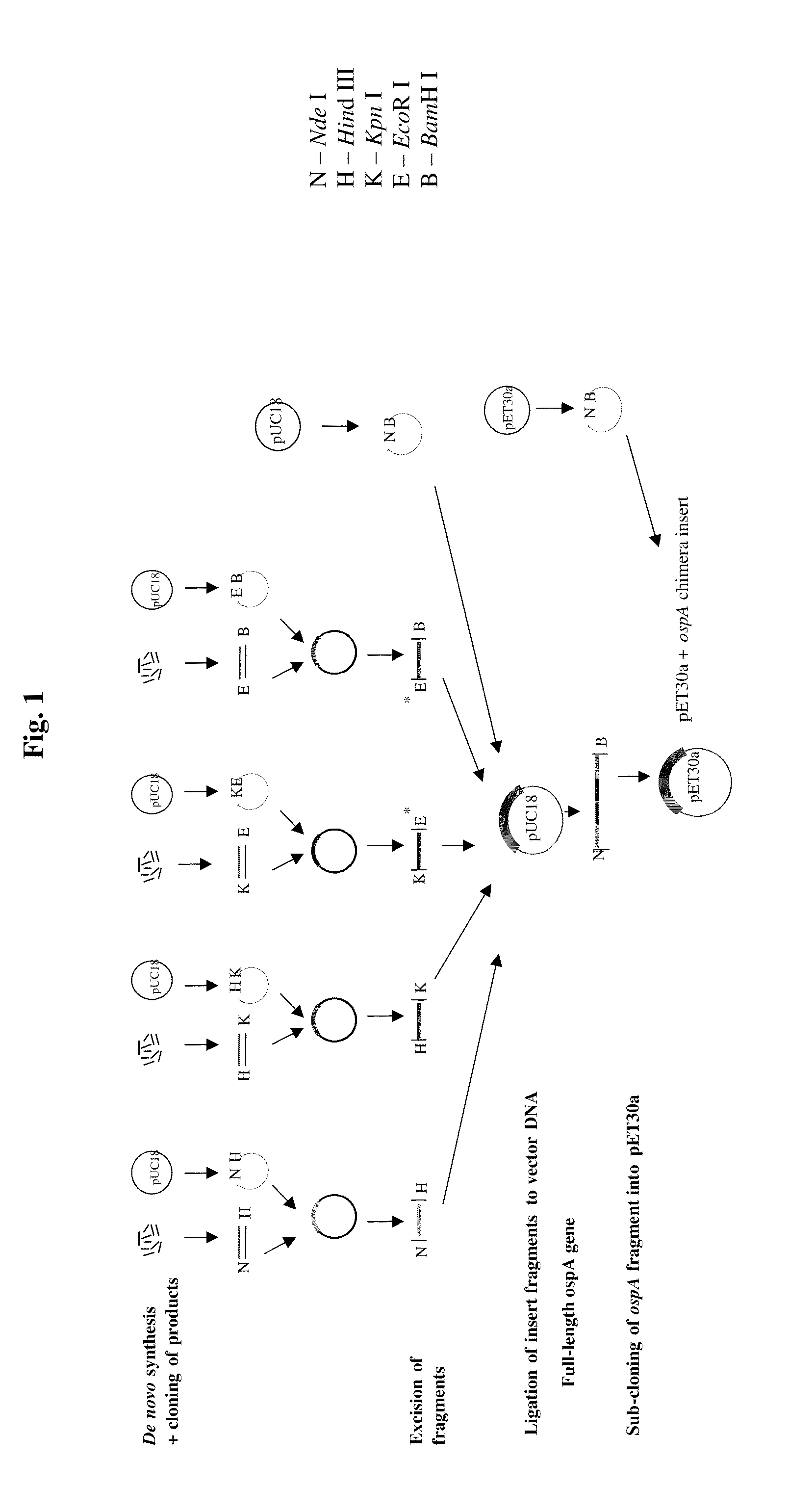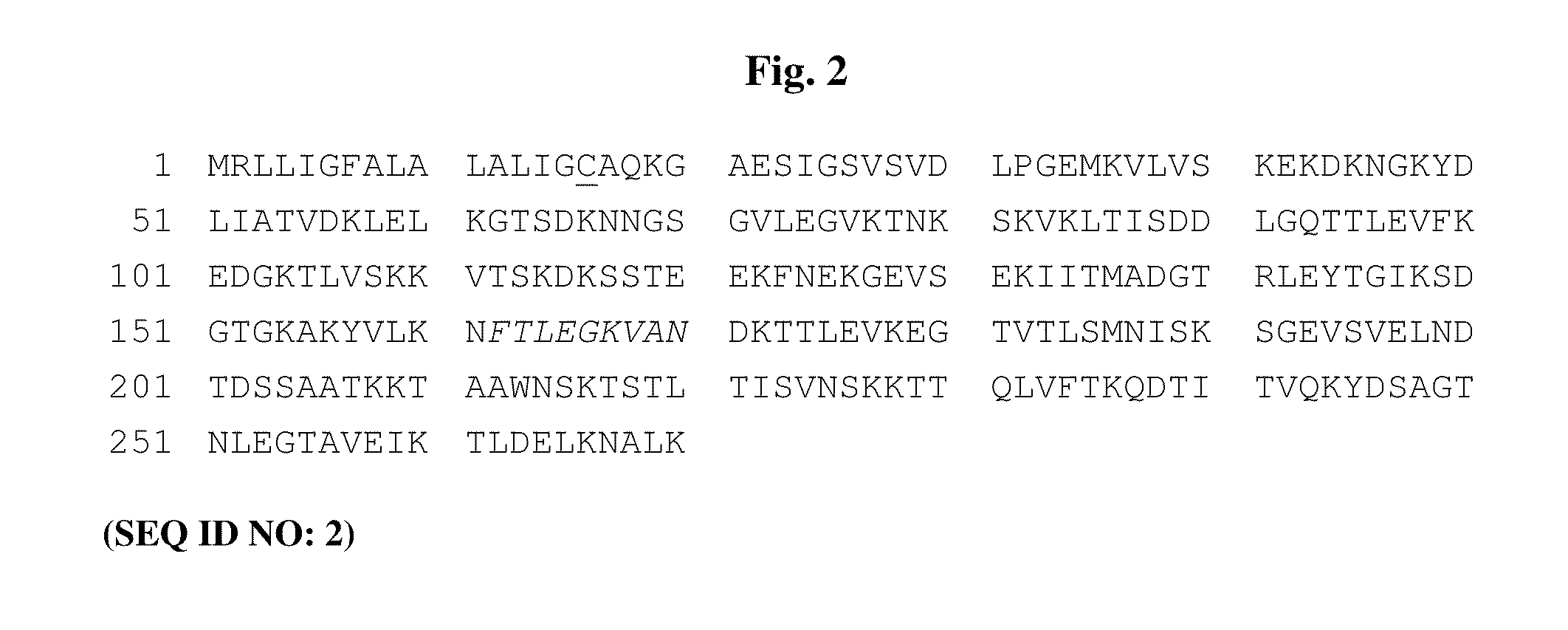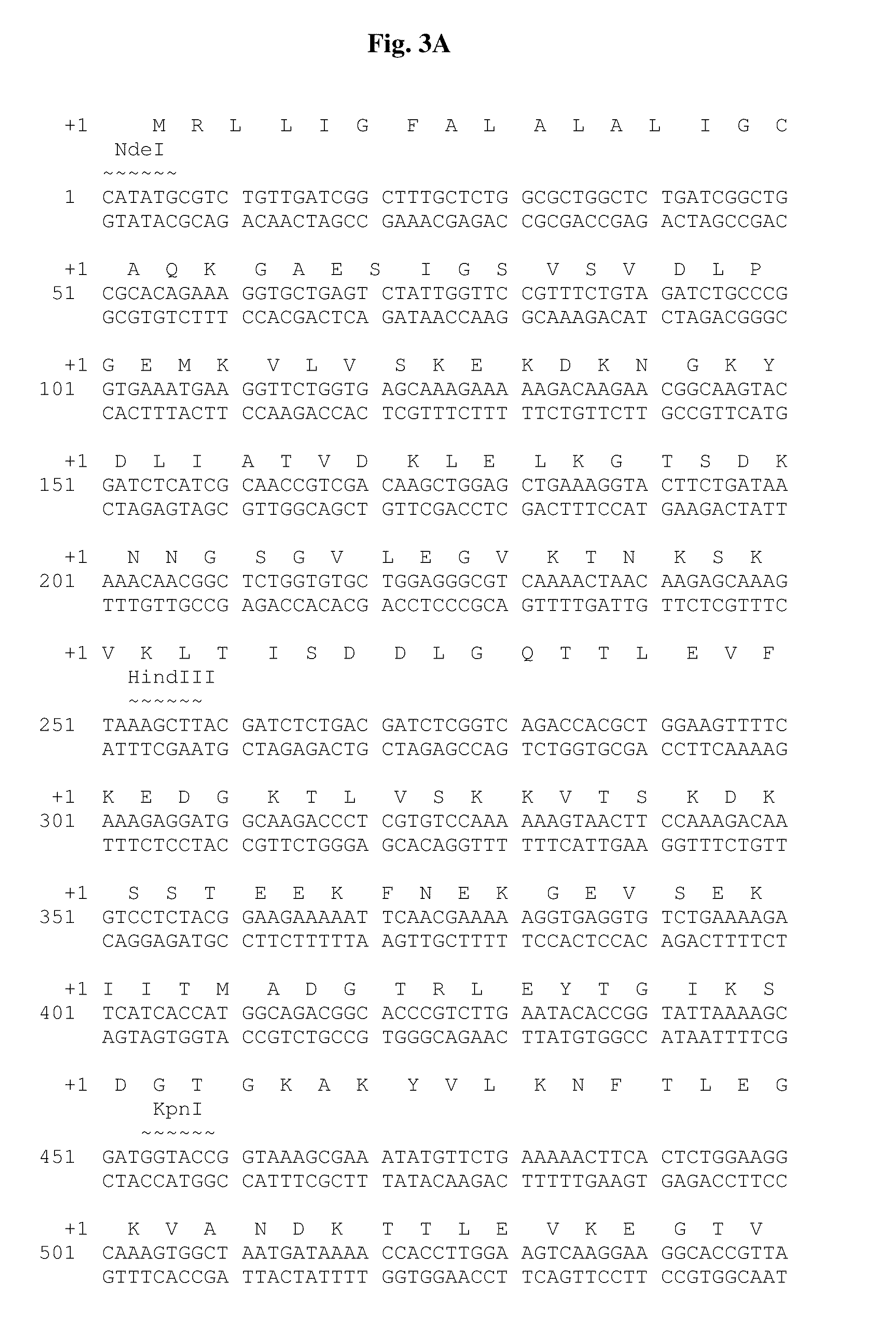Chimeric ospa genes, proteins, and methods of use thereof
- Summary
- Abstract
- Description
- Claims
- Application Information
AI Technical Summary
Benefits of technology
Problems solved by technology
Method used
Image
Examples
example 1
Analysis of the Sequence of OspA from European Borrelia burgdorferi sensu lato Strains (Molecular Epidemiology) for the Determination of an OspA Vaccine Formulation
[0281]The objective of the study was to determine a suitable formulation for a Lyme disease OspA vaccine for Europe. The study was based on sequence analysis of the OspA gene (molecular epidemiology) from a large and diverse strain collection of B. burgdorferi sensu lato, which adequately represents a broad geographic coverage of Europe, the various clinical syndromes associated with disease, and each of the three pathogenic genospecies (B. afzelii, B. garinii and B. burgdorferi ss) associated with Lyme disease. Lyme disease is caused by Borrelia burgdorferi sensu lato, which comprises 13 genospecies in total, three of which (B. afzelii, B. garinii and B. burgdorferi ss) are recognized as being pathogenic in humans.
[0282]At the outset, a large scale epidemiological study (see Table 3 below) was carried out which evaluated...
example 2
Strategy for the Construction of Synthetic OspA Genes Encoding Lipidated OspA
[0287]The aim of the study was to prepare lipidated OspA chimeric constructs from several strains of Borrelia in order to make a vaccine that would protect the recipient from Lyme disease caused by any of these several strains of Borrelia. The general strategy is summarized in FIG. 1 and is described below.
[0288]For each novel OspA gene, four sets of oligonucleotides of between 30-60 bases were synthesized. Each oligonucleotide set consisted of between 8-12 complementary overlapping oligonucleotides. The oligonucleotides from each set were annealed together, in separate experiments, to generate double-stranded DNA fragments with specific restriction enzyme recognition sites at either end, i.e. fragments N-H (Nde I-Hind III), H-K (Hind III-Kpn I), K-E (Kpn I-EcoR I) and E-B (EcoR I-BamH I). Each of the four fragments was cloned independently into pUC18, cut with the corresponding restriction enzymes and tran...
example 3
Description of Lipidated 1 / 2251 OspA (lipB sOspA1 / 2251)
[0317]The aim of the study was to design a novel OspA antigen, lipidated 1 / 2251 OspA (lipB sOspA 1 / 2251), comprising serotypes 1 and 2. LipB sOspA 1 / 2251, comprises the proximal portion of a serotype 1 OspA sequence (Strain B31, GenBank Accession No. X14407) fused to the distal portion of a serotype 2 sequence (Strain Pko, GenBank Accession No. S48322). The start of the sequence unique to the type 2 serotype is the lysine (K) residue at position 216. The construct was originally designed to encode the amino acid alanine (A) at position 251. However, the construct was subsequently altered by PCR to encode an asparagine (N) residue (the actual residue in the published sequence from Pko) to enhance immunogenicity, hence the nomenclature lipB sOspA 1 / 2251.
[0318]Secondary features of lipB sOspA 1 / 2251 are shown in the annotated amino acid sequence of lipB sOspA 1 / 2251 in FIG. 2 and include:[0319]the replacement of the putative arthri...
PUM
| Property | Measurement | Unit |
|---|---|---|
| Fraction | aaaaa | aaaaa |
| Fraction | aaaaa | aaaaa |
| Fraction | aaaaa | aaaaa |
Abstract
Description
Claims
Application Information
 Login to View More
Login to View More - R&D
- Intellectual Property
- Life Sciences
- Materials
- Tech Scout
- Unparalleled Data Quality
- Higher Quality Content
- 60% Fewer Hallucinations
Browse by: Latest US Patents, China's latest patents, Technical Efficacy Thesaurus, Application Domain, Technology Topic, Popular Technical Reports.
© 2025 PatSnap. All rights reserved.Legal|Privacy policy|Modern Slavery Act Transparency Statement|Sitemap|About US| Contact US: help@patsnap.com



